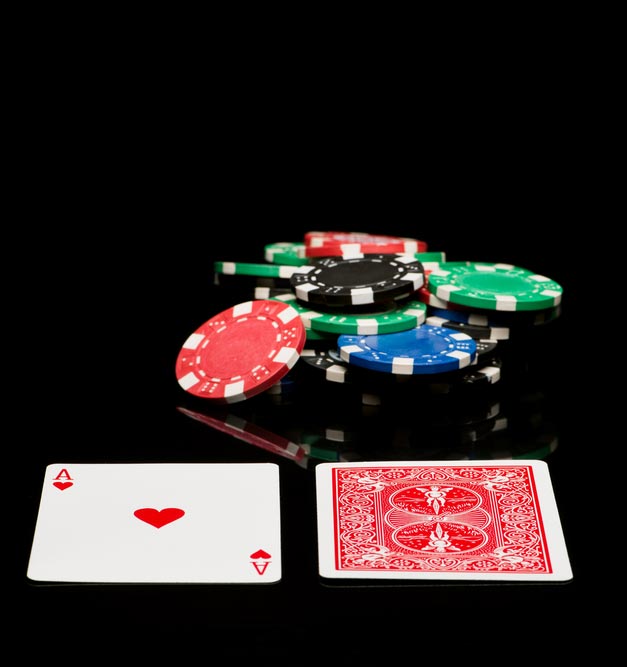
A single-deck blackjack is a standard form of blackjack once popular among casinos, but now rarer, in which the dealer relies on a single deck of cards for the whole game. It is the easiest form of blackjack to count cards with, as the odds can start to lean in your favor earlier than in other forms of the game. Although it can be difficult to find casinos that still play it, they do exist.
Single-Deck Blackjack Rules
The primary goal of the player in single-deck blackjack is to make a hand whose value is as close to 21 as possible without going bust.
The majority of single-deck blackjack rules are similar to those for multi-deck games. These rules are summarized below:
- Before the game begins, the deck of cards is shuffled as there is only one pack.
- A blackjack hand can be divided up to three times by players.
- Aces may be split when the dealer strikes on a soft 17, and players receive one card for each ace they split, which cannot be split again.
- A split ace plus a card with a 10 value does not constitute a blackjack.
- Blackjack pays out 3:2, winning insurance bets pay out 2:1, and other winning hands pay out 1:1.
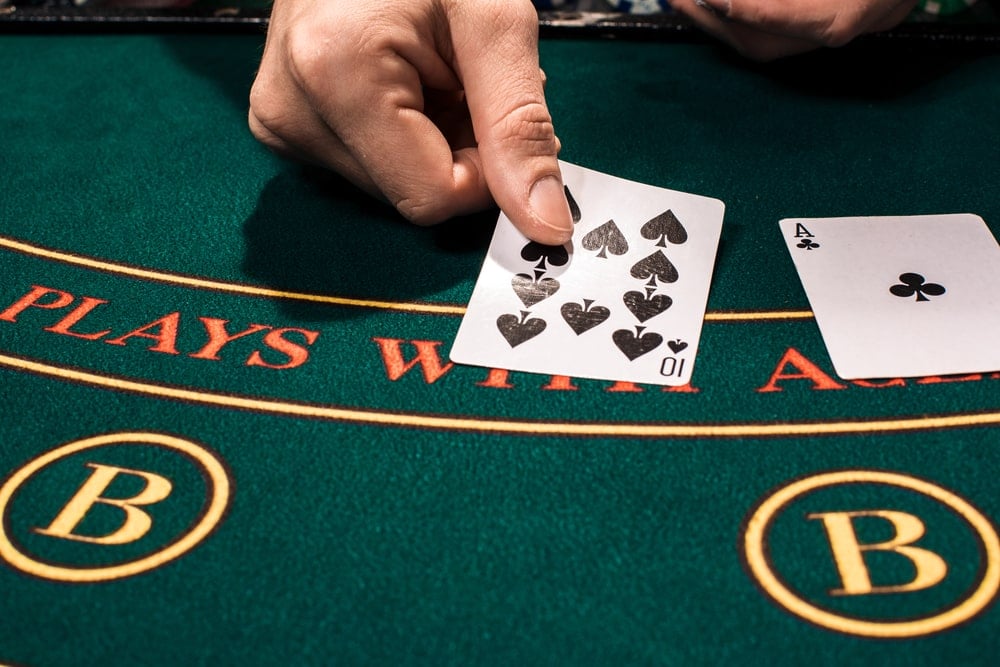
Multi-deck versus Single-deck Blackjack
The main objective for the player is to get as close to 21 points as possible without going bust in both multi-deck and single-deck blackjack. However, the strategies, gameplay, and approach for single-deck blackjack games differ in the following ways:
- As the name suggests, a single-deck game uses just one 52-card deck, whereas multi-deck games use four, six, or eight decks, each with 52 cards.
- The house edge for single-deck blackjack games is 0.15%, while the house edge for multi-deck blackjack games ranges from 0.46% to 0.65%.
- While multi-deck blackjack games pay out 3:2 in many casinos, single-deck blackjack games pay out 6:5 (substantially raising the house edge as a result).
- In comparison to the typical 5.8% for multi-deck blackjack, the house edge on insurance in single-deck blackjack is 5.9%.
- There are often more opportunities to double down in a single-deck blackjack game than in a multi-deck game. This is because there are fewer cards with 10 in the former, which lowers the likelihood of the player bursting.
How to Play Single-Deck Blackjack
There are a few single-deck blackjack strategies that can boost players’ chances of winning. A player must first remember that in a single-deck blackjack game, every card has a significant influence on how the other cards in the deck are distributed. This benefits the players and emphasizes the need of paying great attention to how the cards are dealt with and used.
For a single-deck game, the double-down rules are distinct and need careful consideration. In other words, if the dealer presents 2 or 3, rather than merely 4 through 6, you can decide to be a little more aggressive by splitting a pair of 3s if you double down after splitting.
Similarly to this, you should only surrender when it is the best course of action. The chances are definitely against you if, for instance, you are dealt a pair of 7s and the dealer has a 10, therefore you may definitely surrender at this point.
The potential to boost your odds of winning and outplay the dealer when the dealer stands on soft 17 presents a good opportunity for the player.
It’s crucial to remember that the house edge on insurance in a single-deck blackjack game is 5.9%, therefore you should never accept even money or insurance.
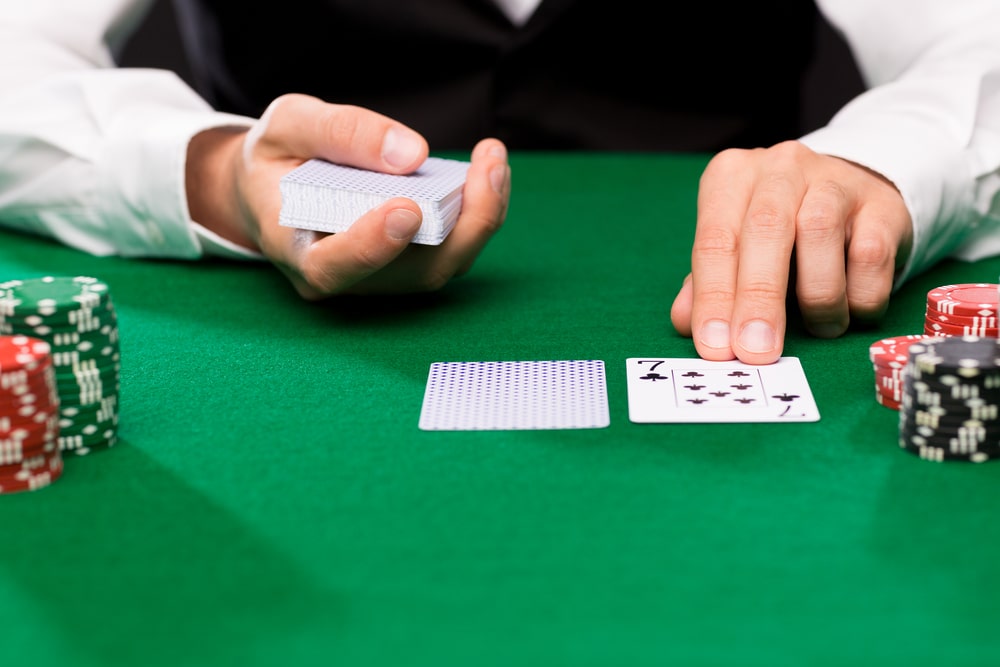
Counting Cards in Single-Deck Blackjack
Counting cards is a tried and true tactic that you cause to identify situations when the remaining cards in the deck favor you. Card counting is a viable technique and strategy you can use to increase your odds of winning at single-deck blackjack. That is because it is easy to count and keep track of the cards in a single deck.
That said, single-deck blackjack games are not commonly offered by casinos, especially land-based gambling establishments. Only a few online casinos offer single-deck blackjack. However, the cards are usually automatically reshuffled, making it difficult to keep track of and count the cards. That makes the point of card counting moot.
Best Single-Deck Blackjack Tips and Strategy
Doubling
Doubling is a popular ideal move in a single-deck blackjack game that may be employed in a number of situations and hands, but is frequently done after discovering the dealer’s hand. When the dealer shows 2-9 and the player has a 5-5 pair, for instance, doubling is the right action.
Splitting Pairs
You should use the following strategies when you are dealt pairs in single-deck blackjack:
- Pair of 2s – Split on the dealer’s 3 through 7, or otherwise hit
- Pair of 3s – Split on the dealer’s 4 through 7, or otherwise hit
- Pair of 4s – Split on the dealer’s 4 through 6, or otherwise hit
- Pair of 5s – Double down on the dealer’s 2 through 9, or otherwise hit on the dealer’s up card of 10 or Ace
- Pair of 6s – Split on the dealer’s 2 through 7, or otherwise hit
- Pair of 7s – Split on the dealer’s 2 through 7, or otherwise hit on ace, 8, or 9, and stand on 10
- Pair of 8s – Always split a pair of 8s
- Pair of 9s – Split on the dealer’s 2 through 6 or 8 or 9, or otherwise stand
- Pair of 10s – Always stand on a 10
- Pair of Aces – Always split Aces
When to stand
Using the best single-deck blackjack strategy possible, a player must: Place her feet on the gentle hands of A-9 and A-10 and the rough hands of 17 and 21. The player must stand on 2, 7, and 8 if the dealer reveals 3-6 and the player receives an A-7. A stand is the wisest course of action for the 10-10 pair as well.
When to hit
The most common move in single-deck blackjack is to hit. Hitting is nearly as important for one-deck blackjack as it is to multi-deck games. With this strategy, you must hit on nearly all pairs, except a pair of aces, 10s, 9s, and 8s, in which case you must base your next optimal move on the dealer’s upcard.
Hitting is essential for most soft hands, as well, except for Ace-10, Ace-9, and Ace-8. You must hit on most hard hands too, except for hands worth 17 through 21.
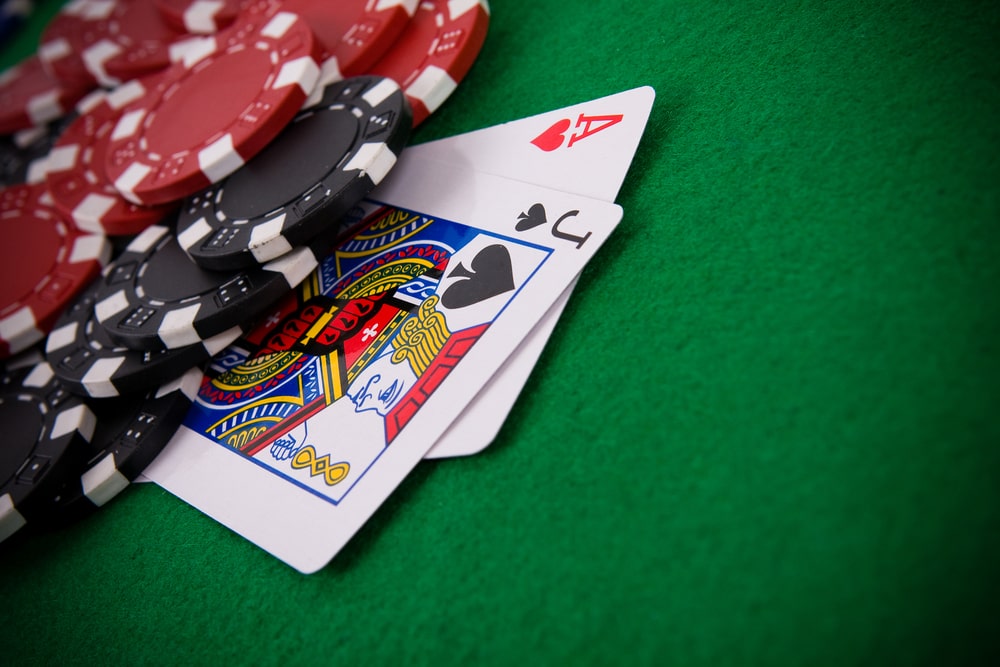
Can you win at blackjack without counting cards?
Blackjack, like all casino games, has an edge that lies with the house. The player can win in the short run, but the house is likely to win in the long run. Counting cards can offer a small advantage, but good players have a pretty decent chance without counting cards and plenty of people play blackjack as their game of choice.
Do blackjack dealers count cards?
No. Casinos discourage counting cards in general, so they do not train dealers to count cards.
The dealer can’t alter their play style, even if they did know something about the deck, because their decisions are automated – Any hand worth 17 or above is a stick, and anything worth 16 or below is a hit.
A dealer could strategically shuffle the deck earlier than they otherwise would if he noticed the deck was very favorable to the player’s hand.
He could also give bad advice to the gambler, with the knowledge that the deck was a certain makeup. With that being said, the dealer doesn’t really have any incentive to count cards, as their wage is not based on what the casino makes, but just hourly. A really quick dealer might count cards, just out of boredom, but not to disadvantage the players.
Do professional blackjack players count cards?
Yes, the vast majority of professional blackjack players if not all count cards to weigh the odds in their favor against the house. As the game progresses and more is known by the player about what cards are yet to be played they can be more certain about their choices.
The professionals are all well read up on card counting, as it gives them such a competitive edge.
Do you have to be good at math to count cards?
Math is a fundamental element of counting cards, as you must be able to calculate your odds of pulling the cards that you want against the cards that you don’t want. This strategy can take a fairly large amount of quick data processing, which is why casinos can often tell if you’re counting cards by the pained expression on the gambler’s face as they contend with big sums of probability.
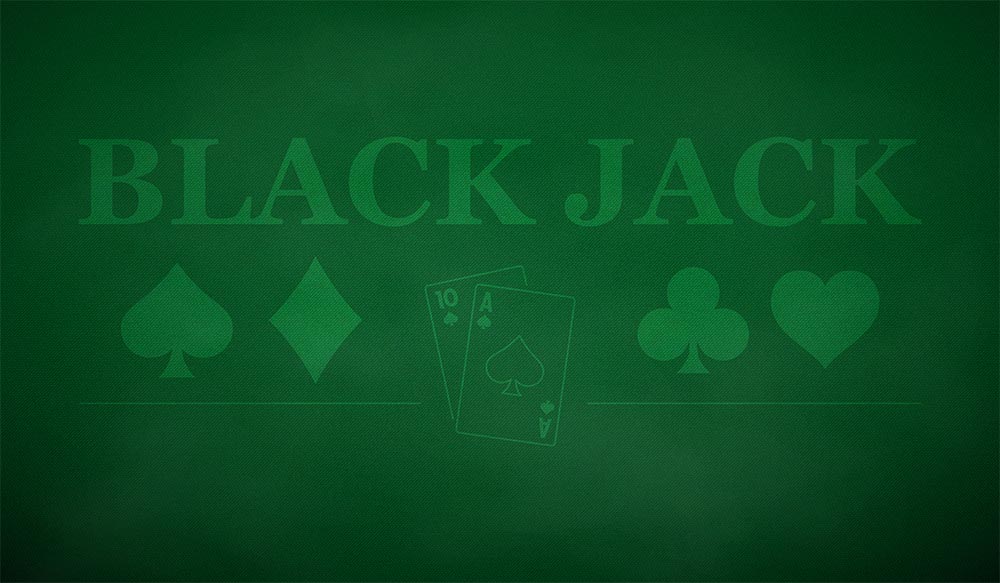
Although the math behind the odds of single-deck blackjack isn’t complicated, the real difficulty comes when you do it in your head under time pressure at a noisy casino. Some have a knack and some aren’t good at math and have a natural affinity for counting cards. This is down more to a person’s memory, as you can’t write anything down. Some simplifications can make counting cards a lot less about math and more about memory.
How do you count cards for dummies?
The fundamentals of the hi-lo counting card method are not overly complicated
- The player must keep a count of each card’s value that leaves the deck by assigning a positive, neutral or negative score based on how it affects the balance of the remaining cards.
- If you pull a high number the balance will negatively affect the remaining cards and the count, meaning a low count signifies that low cards are left in the deck.
- Use this count to make your bets. If it’s a deck with high cards left, bet big. If the remaining shoe has mostly low cards, bet small, as the deck favors the dealer.
- Use this count to aid your decision to hit or stick on each hand.
- If you’re playing with multiple decks, the effectiveness of your count is going to be delayed, so you need to be aware of this and consider how far into your multi-deck game you are before using your count as a strong indicator.
- Be aware of the dealer shuffling the mid-deck, as you’ll have to start your count from the beginning.
How long does it take to learn to count cards?
Some gamblers with an aptitude for card counting can pick up the basics of this skill set after anywhere from 20 hours of practice, but it can take anywhere up to 200 hours of practice for a gambler to get very good at counting cards. There are lots of more advanced techniques that can be learned as well as just the fundamentals.
How much of an edge does card counting give?
In a standard six-deck blackjack game, each true count can reduce the house edge by around 0.5% in favor of the player. That means a true +1 running count will essentially eliminate the blackjack house.
That said, there are a couple of ways that counting cards can help a card counter win…
- The dealer can’t alter their strategy, but the card counter can account for the balance of the remaining deck when they hit or stick.
- Smart card counters know that a higher count will make the dealer bust more often than the player, so can put more money on the table for these hands.
High cards mean more blackjack hands – 21’s for you and the dealer. The difference is that you are rewarded more for a blackjack than you are penalized for a dealer’s blackjack.
As you can see, a high count nearing the end of a deck can give the player a large advantage and produce massive wins for the player.
Is it hard to count cards?
Many people’s first reaction when counting cards is that it is confusing, impossible, and only for geniuses. This is however not the case and it is for most people a relatively intuitive strategy. It’s not a get-rich-quick scheme and you need to be at the top of your game to make the strategy work properly.
You can’t half get the gist and become a millionaire with this strategy; you must be 100% solid on your strategy and have your counting technique mastered before you can really make it work for you.
It does require a good amount of learning, practice, and research to make counting cards work and some say that 200+ hours is what it takes to be able to effectively count cards.
Is single-deck blackjack beatable?
Single-deck blackjack is one of the most easily beatable forms of blackjack that you can play, as the standard deck size means that you don’t have to play as long with regular odds before your counting tips the scales in your favor.
In multi-deck blackjack, the game will go on for longer before your advantage comes into play. This means a higher chance of losing all of your bankroll before you can put the techniques you’ve learned to your advantage.
What is a good blackjack count?
With a high count, we know we have a high chance of getting a picture card and the rewarding blackjack. It’s worth noting here that there are loads of different card counting methods and so a good count will be different for other methods.
What is considered a good count will also vary based on the value of the player’s hand and the upcard of the dealer. For instance, a running count of +3 or higher is regarded as good if you have a 12 against the dealer’s upcard of 2.
